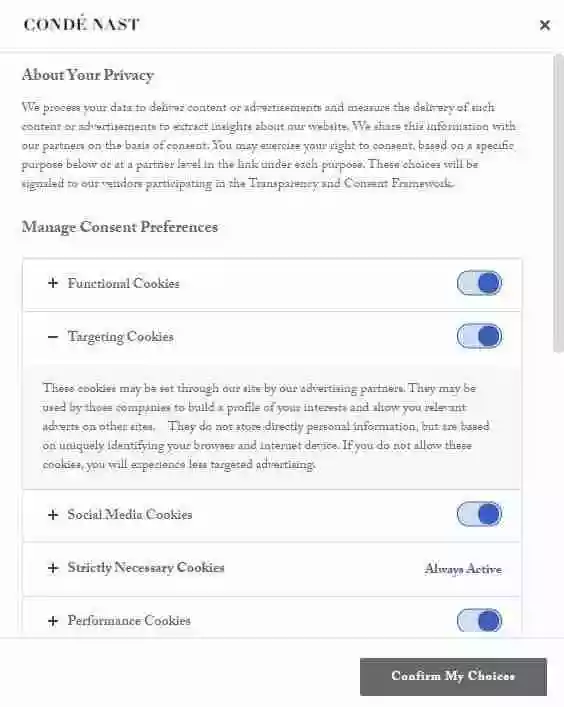Most of your visitors don’t care about why you need to place a cookie in their browser. They come to your site only to consume the content they’re looking for, and they’ve been doing it ever since the dawn of the internet. They’d prefer no one to ask any question upon their visit so that they can use your site peacefully.
That’s why 76% of the users close the popup without making any choice. At the same time, there’s enough paranoia towards privacy that most users would say no to cookies whenever answering looks mandatory. For instance, ATT has an opt-in rate of 25%. So, it’s clear that the odds are against you. But, it’s your business, and you’ve to protect it. Your efforts to optimize the consent rate on your site can make a difference. Let’s see what you can do.
Table of Contents
5 Tips to Optimize Consent Rate
1. Build the right testing process
You’ll come up with many ideas during your consent rate optimization process. Changing the design, language, links, buttons, etc., on your page and consent forms will be your recurring tasks. While trying and choosing the best-performing option is the right approach, you need to ensure a sound testing process. For example
- A/B testing can tell you which form gets the highest number of opt-ins, but it won’t consider the user experience they deliver. So, it’s better to include a step for UX testing as well.
- If a form is performing the best due to a dark pattern, a simple A/B test wouldn’t inform you about it. As a result, you’ll increase your consent rate, but it’ll violate privacy policies like CCPA and GDPR. A sound testing process will consider such privacy laws as well.
In other words, you should have an elaborate testing process. It should consider multiple factors, and you should choose the best results within your constraints. The idea is to optimize the consent rate for the long run, not maximize it for short gains.
2. Find the best optimization tool
Most publishers use CMPs for consent management. It’ll be most convenient if your CMP offers a consent optimization tool too. Unlike generic testing tools, an optimization tool from a CMP has the sole purpose of improving your opt-in rate. Hence, it can serve you better.
But, if you have a specific requirement, say finding users who changed their consent preferences after an event, and if a CMP can’t fulfill it, then there’s no harm in trying other tools. Alternatively, you can partner with a custom solution provider that can build an optimization tool as per your requirements.
So, after you’ve finalized a testing process, you’ll need the tools to carry it out. Depending on your requirements, the tools can come from a CMP or a non-CMP company. OneTrust, Usercentrics, Sourcepoint are some of the CMPs that talk about consent rate optimization. Other tools like Convert can complement your CMP’s consent rate optimization process. A/B testing tools like VWO can help you optimize your consent forms independently.
3. Get rid of the friction
Many publishers own multiple domains with shared audiences. But they take consent separately whenever the same user visits their other sites. It happens because they set up each of their sites independently. But it leads to unwanted friction that costs you the loss of consent that you already acquired because your users may deny cookies when you ask them again and again.
Similar friction occurs when a user visits your site from a different device. When a user has already permitted tracking while visiting your site from his mobile, it’s redundant to ask the same question again on his desktop. Dealing with this problem not only improves the user experience, but it’ll also help you retain consent from your visitors.
So, publishers should use the CMPs that can help them with cross-device and cross-domain consent tracking. Complianz and CookiePro are some CMPs to look out for.
4. Provide Granularity
Publishers do not use cookies only for targeting purposes. For instance, there are some strictly necessary cookies required for log-in information, user preferences, etc. Other categories include analytics, functional, and targeting cookies. But many publishers use the “accept all or deny all” approach. It means their consent popups have only two options to either accept or reject all the cookies.
If they add a third option to customize the cookie settings, there are chances that the user wouldn’t reject all of them. It’ll also improve the user experience because your visitors will have more control in their hands.

Within your customization window, you can include a list of every kind of cookie that you use. The same list can explain those categories so that the user takes an informed decision. Use this approach to improve your consent rate and empower your audience at the same time.
5. Deliver a personalized experience
Your cookie consent messages do not need to be the same for every visitor on your site. You can experiment with the language and use different statements depending on your audience. For example, visitors from the UK may react differently to a phrase than visitors from Australia. So, you’ve to use the language accordingly.
Similarly, you can find that users with a specific behavioral trait agree more with an individual template. For example, people landing on a content category may be open to accepting cookies when permission is sought through a particular banner. In other words, you should study your audience and find out what kind of message works best for different segments. It’ll help you deliver personalized consent messages that can work better than a static template.
What’s Next?
Try to find a CMP that does all the job so that you don’t have to deal with multiple tools. In this way, your consent rate optimization will remain free from complexities. Treat consent rate optimization as a continuous process that evolves with your experiments and learnings. Always thrive to build a trustworthy brand among your audiences. If your visitors trust you, they’ll be less hesitant to give consent.























